Are Britain's footpaths in slow decay?
- Published
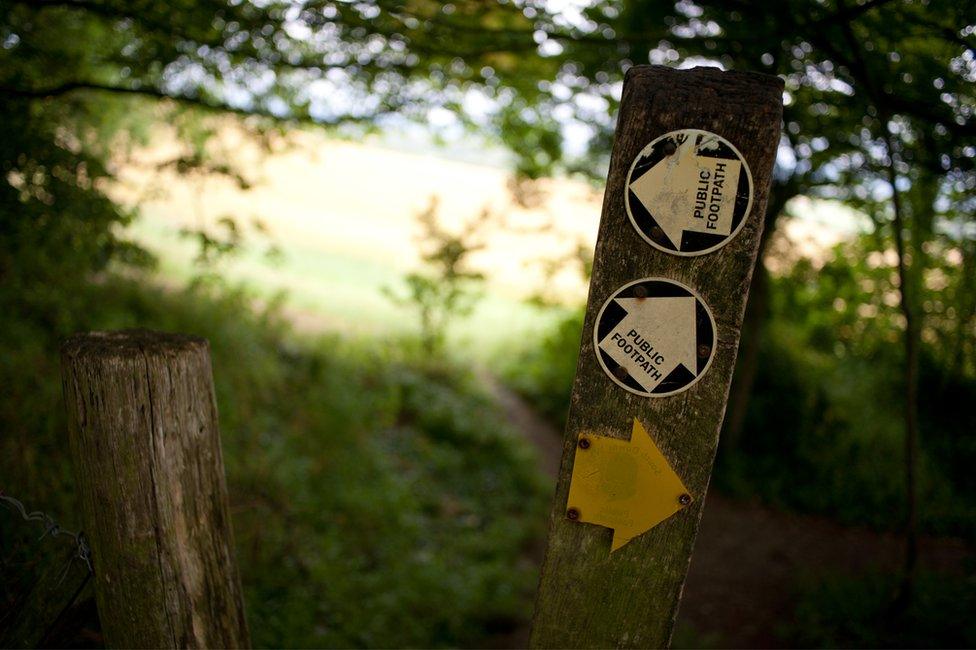
There are more than 140,000 miles of public rights of way in England and Wales
The Ramblers Association is warning that the government needs to do more to prevent deterioration in the quality of Britain's network of paths. What can be done?
It's a beautiful sight. The descent from the South Downs provides views across undulating, geometrically marked wheat fields, fringed by hedgerow and leading on to flatter land stretching tens of miles into the distance.
The footpath is fine as you move towards the East Sussex village of Alciston - until, suddenly, it's not. The path becomes overgrown. A small fallen tree blocks the way to the less agile walker. Parts are crumbly underfoot. Then, a hundred metres or so further down, it's absolutely fine again.
This small section of country path isn't an isolated example of neglect, the Ramblers Association (RA) says, but more of a microcosm of the inconsistency that confronts millions of walkers.
Citing figures provided by 68 councils in England, it says there were 86,199 problems reported last year. Many paths are taken over by crops such as potatoes and oilseed rape, while barbed wire, missing signposts and broken gates and stiles make getting about difficult and unpleasant.
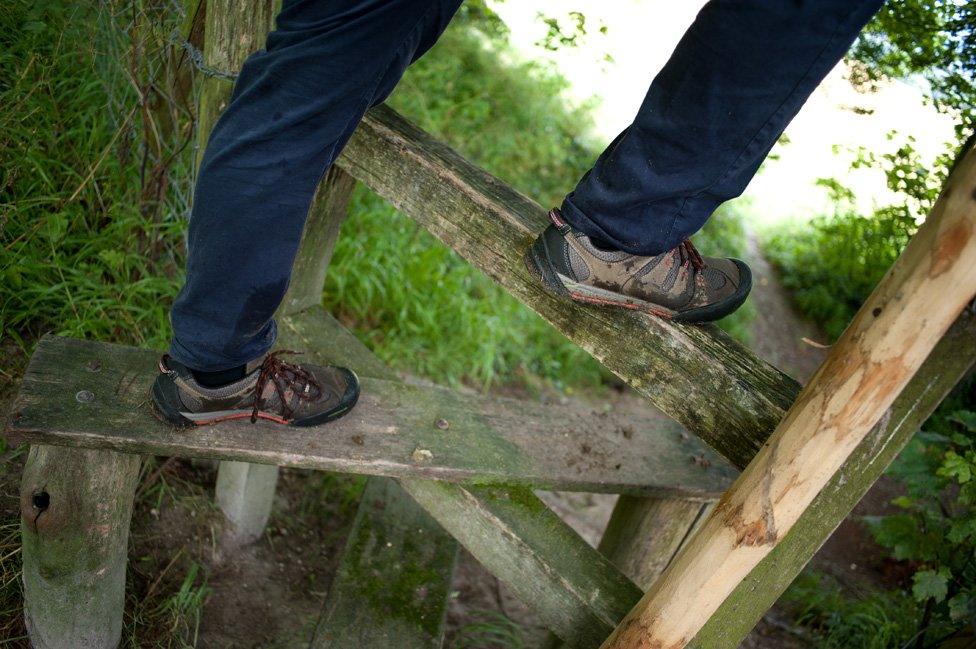
Councils have a duty to ensure the quality and accessibility of paths are maintained
The ancient Greek doctor and writer Hippocrates described walking as "man's best medicine", external and, in this spirit, the NHS is encouraging people to take 10,000 steps, external a day, as part of a healthier lifestyle.
Walking is already hugely popular. The government says 86% of people in England walk each month, external either for recreation or "utility" - such as getting to work or going to the shops - or both.
This is more than the 85% of adults who watch TV in a year, according to the 2010 Social Trends survey.
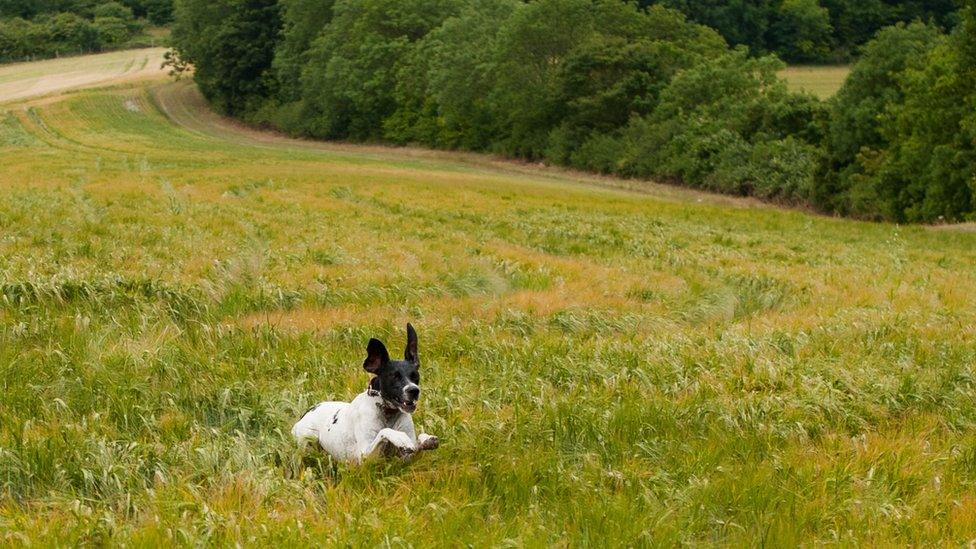
The path to Alciston, East Sussex, which is enclosed by trees and hedgerow, runs between two large wheat fields
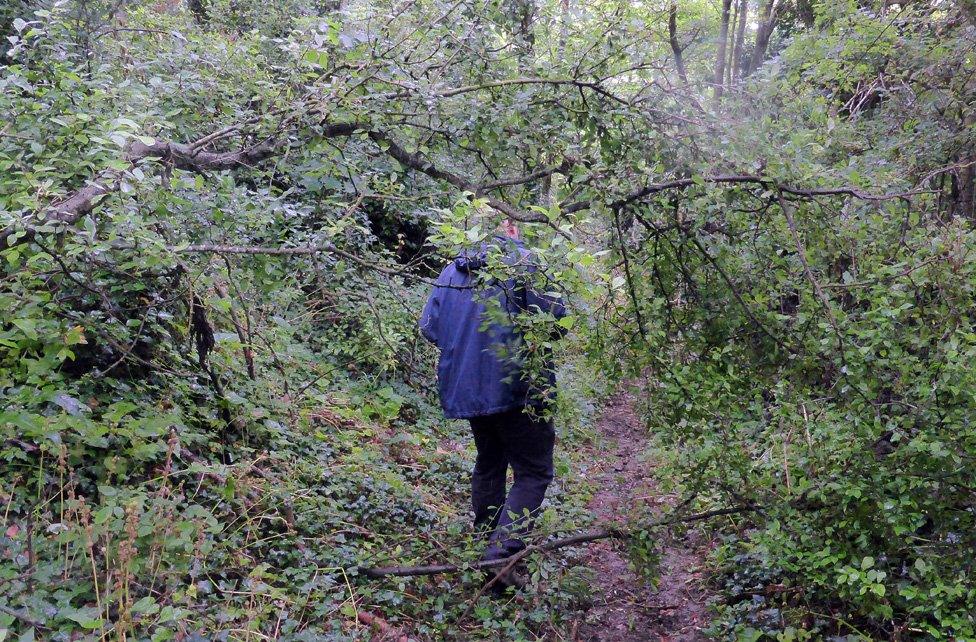
The Alciston path, which leads on to the South Downs Way, is overgrown in parts
And there are seemingly plenty of places for the walkers to go. In England and Wales there are estimated to be 140,000 miles (225,000km) of public rights of way, consisting mainly of footpaths, but including bridleways and other types of byways. The figure for Scotland, external is estimated to be 9,300 miles (15,000km).
Rights of way are a network, the Department for the Environment, Food and Rural Affairs says, comprising "a mix of age-old routes, including those created statutorily as part of the process of enclosing the old common lands land into private occupation and those created more recently, either through long public use, or under statutory powers, or through dedication by the landowner".
Rambling became popular in the 19th Century among town-dwellers keen to get some fresh air and exercise, escaping their often polluted home environments.
The romantic poets, who emphasised the power of nature, encouraged walking, external. William Wordsworth and John Keats were among those who took long strolls for inspiration.
As long ago as 1949, the government began documenting public rights of way in England, their origins and exact whereabouts sometimes murky, in an effort to make sure those less well documented didn't die out.
"That process proved far more difficult than originally envisaged and remains unfulfilled to this day,", external the Department for the Environment, Food and Rural Affairs has said.
In 2000, the Labour government set a 2026 cut-off time for rights of way to be registered - 77 years in total after the process started. And, in 2012, the coalition promised to make it easier and quicker to register paths, external, so that fewer would miss the final deadline and be lost for good.
But the RA says monitoring efforts require still greater urgency, in case some of the undiscovered rights of way become null and void. It has launched the Big Pathwatch scheme, asking members to compile a full log of the state of public rights of way in England and Wales. An app allows people to share their experiences as they walk every right of way within a specific grid square, external.
"We know that there are currently problems on our paths that stop people in their tracks," says chief executive Benedict Southworth. "We need to find the true extent of the problem and explore how this affects anyone who uses our paths, whether that's on their shortcut to the shops or while they're out enjoying our glorious countryside."
"In my part of the world, in just the last year, I've reported paths with crops over them and, when they've been cleared, they've not really been cleared properly," says Kate Ashbrook, general secretary of the Open Spaces Society, who lives in Oxfordshire. "I'd imagine it's going to get worse and worse."
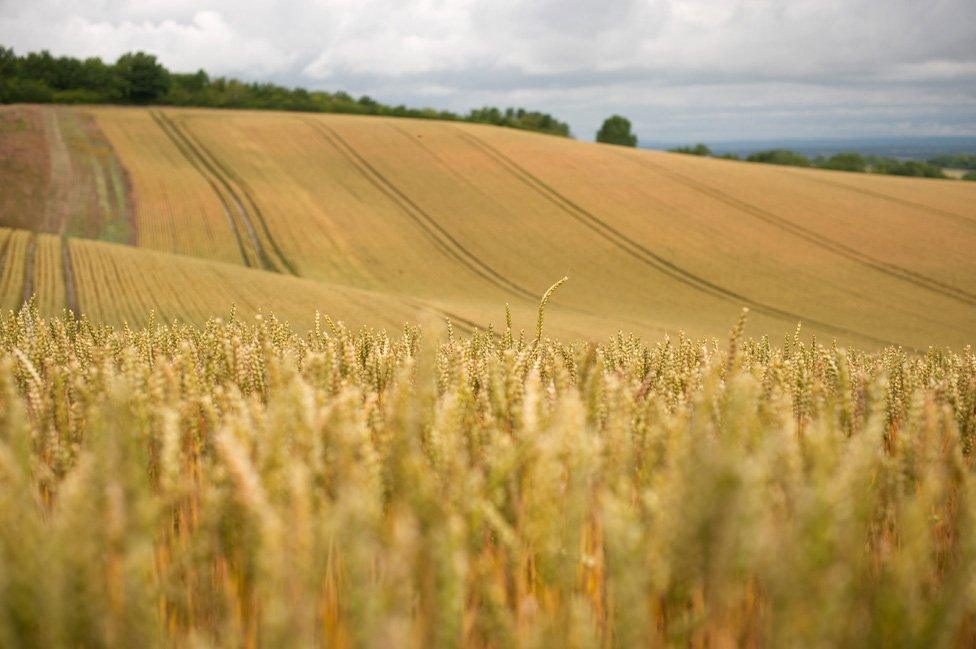
Millions of people go walking to take in spectacular views
Ashbrook says that, in the last 20 years, landowners "have improved and become more aware and do better" at ensuring the paths across their fields are kept at least a metre wide, as stipulated.
Yet in England and Wales it's up to county councils or unitary authorities to make sure paths are open and easy for walkers to use.
However, with spending cuts, local authorities have become less well funded and can devote fewer staff to enforcing the rules, Ashbrook says, adding: "It's no surprise that these problems appear to be mounting and that we've now reached this crisis point."
Until 2007-08, councils had to compile Best Value Performance Indicators, which included an audit of a proportion of the path network in their area. Since these were abolished, some councils have continued to do so, working with the RA and other organisations. Some have not, external.
"Councils are doing all that they can to maintain and improve their footpaths," says a Local Government Association spokesman. A recent LGA survey of councils found 73% had a "walking investment programme" in place.
Over the next few years the popularity of walking as a hobby, both in town and countryside, is likely to increase if people take note of the NHS's urging to take 10,000 steps a day.
The likes of Alciston, which was listed in the Domesday Book as having 109 households and is not much bigger today, external, could get a little busier. Its pub, church and thatched cottages make it a pleasant stop-off point for those crossing the 100 miles (160km) of the South Downs Way, stretching from Winchester to Eastbourne.
"In many ways the story of our pathways is the story of the country," says Ashbrook. "We shouldn't and mustn't lose that."


More from the Magazine
A number of recent books have lauded the connection between walking - just for its own sake - and thinking. But are people losing their love of the purposeless walk?

Photographs by Phil Coomes
Subscribe to the BBC News Magazine's email newsletter, external to get articles sent to your inbox.